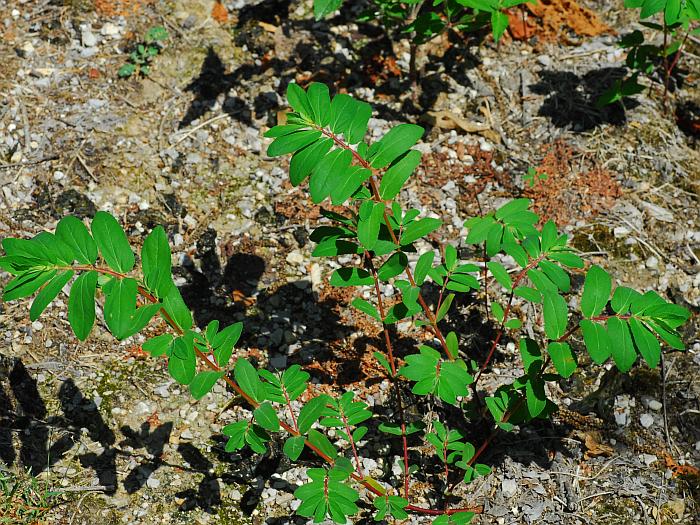Euphorbia nutans Lag.
Nodding Spurge

Native
CC = 0
CW = 3
MOC = 83
© DETenaglia
Euphorbia nutans Lag.Nodding Spurge | |
 |
Native CC = 0 CW = 3 MOC = 83 |
© DETenaglia |
|
Family - Euphorbiaceae Habit - Taprooted annual forb. Stems - Ascending, often arching at the branch tips, to 80 cm, several-to many-branched, not flattened toward the tip, tan to reddish brown, with milky sap, sparsely to moderately pubescent with woolly hairs, sometimes mainly toward the stem tip and around the nodes, the hairs sometimes in 2 bands along opposite sides of the stem.
Leaves - Opposite, simple, sessile or very short petiolate. Petioles to 2 mm. Stipules present as small scales 1.0-1.5 mm long, separate, or, on 1 side of the stem, those from the adjacent leaves in each pair basally fused into a single small structure, irregularly toothed, fringed, or divided. Blades 8-40 mm long, oblong to oblong-lanceolate, asymmetrical at the base, with the side toward the stem tip usually angled or rounded and the other side more or less truncate to cordate and expanded into a small, rounded auricle, mostly angled to a bluntly pointed tip, the margins finely several-toothed, both surfaces glabrous or more commonly sparsely to moderately pubescent with curved to more or less spreading, slender hairs mostly toward the base, the upper surface often reddish-mottled or with a conspicuous reddish spot, the undersurface variously pale green or faintly to strongly reddish-tinged. Primary lateral veins mostly originating from the base of the leaf.
Inflorescence - Axillary, of solitary cyathia or appearing as small clusters on short axillary branches. Pedicels to 4 mm long, glabrous.
Flowers - Involucre 0.5-1.0 mm long, externally glabrous, the rim shallowly 4-lobed, the marginal glands 4, 0.3-0.5 mm long and more or less equal in size, the body oblong to nearly circular, green or occasionally reddish purple, with a relatively inconspicuous petaloid appendage 0.2-1.5 mm long, this white or pinkish-tinged. Staminate flowers 5-28 per cyathium. Ovaries glabrous, the styles 0.6-2.5 mm long, each divided 1/3-1/2 of the way from the tip into 2 slender lobes.
Fruits - Capsules 1.6-2.3 mm long, 3-lobed, 3-seeded, glabrous. Seeds 1.0-1.6 mm long, elliptic-ovate to ovate in outline, angular in cross-section, slightly convex at the base, the surface finely and irregularly wrinkled or with indistinct shallow, rounded cross-ridges, sometimes faintly so, dark brown, sometimes with a thin, white coating, this often more persistent along the angles than the faces, lacking a caruncle. Flowering - May - October. Habitat - Streambanks, pond margins, swamps, upland prairies, upland forest openings, pastures, fields, railroads, roadsides, open disturbed areas. Origin - Native to the U.S. Lookalikes - Other members of the Euphorbia genus, also Phyllanthus caroliniensis. Other info. - This weedy species is found throughout Missouri and the eastern half of the continental U.S. The plant is very common along roadsides and in disturbed areas. Many of the plants from this genus can be hard to differentiate. E. nutans tends to grow upright but with stems which arch outward. The small, 3-lobed fruits are glabrous. The stems and leaves can be moderately hairy, but the hairs are fine and inconspicuous, and the plant often appears mostly glabrous. The stems are often reddish. Photographs taken at the Current River Conservation Area, Reynolds County, MO., 7-28-01, and in Ellington, MO., 7-7-03 (DETenaglia); also along the Katy Trail near Treloar, Warren County, MO, 7-29-2012 and 10-6-2020; and at Otter Slough Conservation Area, Stoddard County, MO, 8-15-2021 (SRTurner). |